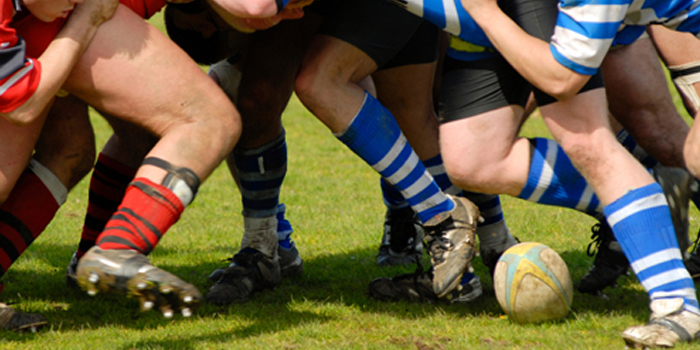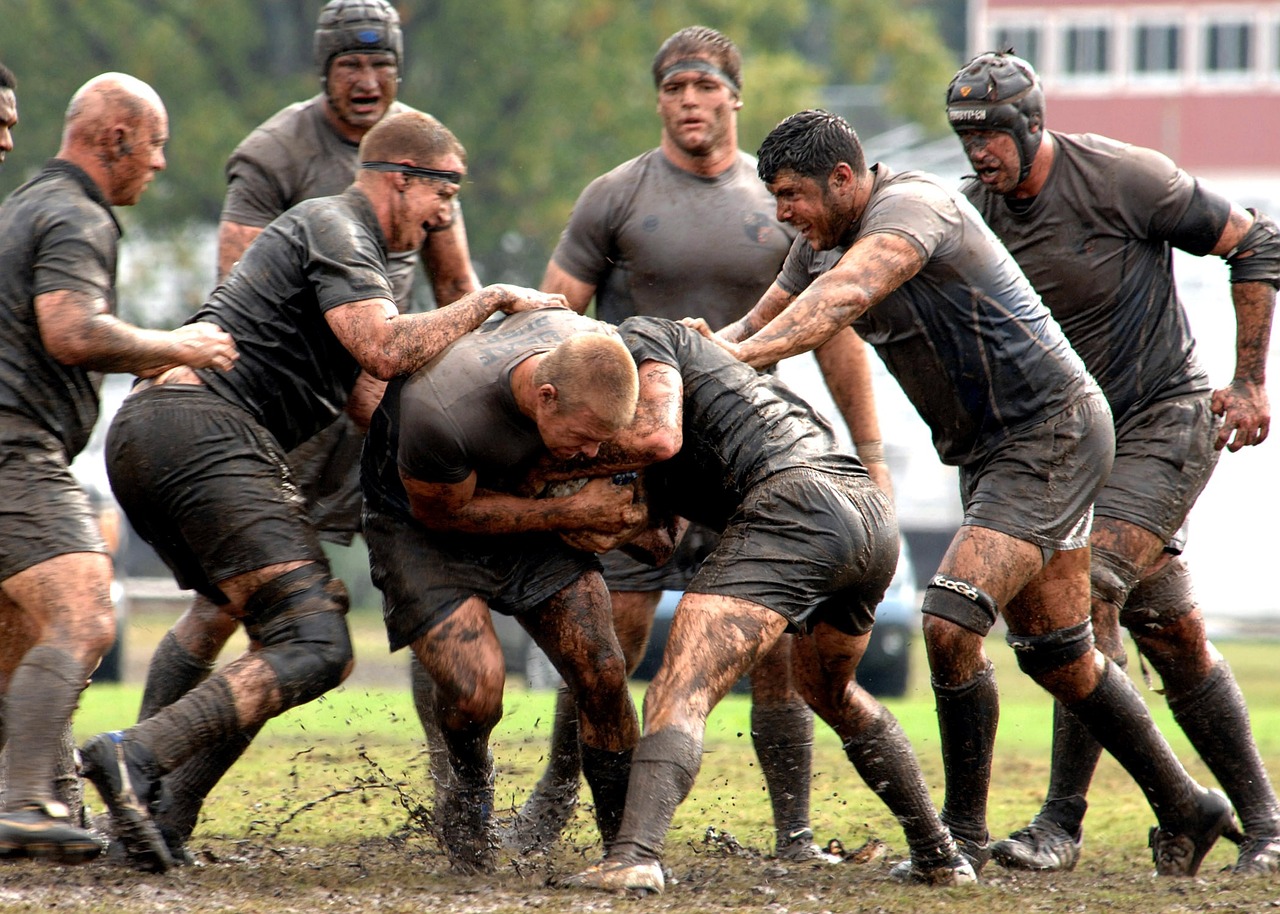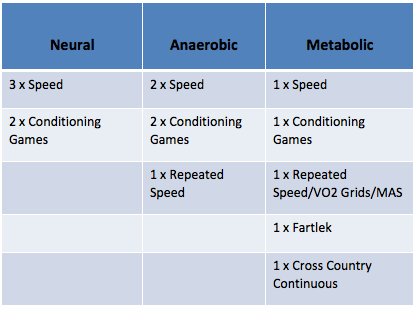
Are you programming around the big five strength pentathlon of squat, bench, deadlift, snatch, and clean and jerk? Do you use these because there are objective standards for body weight classes, sexes and you can use equations to compare individuals? Do these movements improve the quality of your athletes performance or do you have a preferential bias to these movements? Is an athlete who squats 200 kilograms at a bodyweight of 129 kilograms in need of serious time in the squat rack to get him to at least double body weight? Or does he need to be guided into movements that will make him better on the field of play?
The key to improving performance on the playing field is the individualization of the physical performance plan to the specific needs of the athlete. Most programs claim that they individualize. It takes time and effort to truly say that you have 45+ different programs for each of your squad members, but that is what is required.
In this article I am going to explore the details of the individualization process in order to give your athletes the best chance they have of being the best they can be.
As Damian Marsh once said to me, “it is all about the buy-in you get from the players that you have in the environment that you help to create.” Here in lies the essence of the individualization process: treating each player like the individual person he is.
First you need to address a few things before you can have a meaningful conversation with the players in your group.
- Are your preferential biases for certain types of training getting in the way your athletes becoming better rugby players?
- Are you training players to pass a specific test or are you training them to be better rugby players?
- Irrespective of how fitter, faster or stronger you make a player or a team, you will be judged on your win/loss record at the end of the season.
The next step after you have looked at yourself is to have a one-on-one meeting with each player on your roster. I try and get to speak to every player every three to four weeks to re-evaluate our programming and to ensure we are continually on top of any issues that may have come up in preceding few weeks.
In the initial chat here are the questions that we discuss:
- Who is the best player in your position in world rugby?
- Why is he the best?
- What are you strengths and work ons?
- What do you need to be the best rugby player you can be?
Then we look at the upcoming week plans and discuss how we can best fit his needs and non–negotiables into what the team needs as well. So it becomes like a university timetable where you have compulsory lectures that you need to attend (rugby sessions) and then you have to meet with an academic adviser and place your tutorials (strength and conditioning) into the plan.
WATCH: Unilateral Lower Body Training for Sport Performance
So we need to develop a prioritization plan in order to do what matters most. As the Pareto Principle states, 80% of the results come from 20% of the time/efforts. In order to achieve this, I think we need to change our focus somewhat from “how much training can a player tolerate” to “how much training in each area does a player need to be better."
Pre-season programming is the most important time in player development, so in order to structure it best, optimize individual-needs based training in light of the fitter, faster, stronger development areas. It is a necessity to sit down with the player to organize his training week. The two main questions to ask at this time are:
- What is your limiting factor for improved rugby performance?
- How do we program what you need to do into the team week plan to ensure you are doing what you need to get better?
Stronger will be any weight room focus that we need to consider. It will include elements of hypertrophy, maximal strength, and the development of power. In pre-season depending on the type of programming that a player needs, he may spend up to eight sessions a week in the weight room.
Weightroom Training Programming Focus
Peak power (previously Olympic based but now expanded to look at all exercises that can generate this most important physical quality) I want as many programming options in the weight room as possible so that I can ensure that the players have viable non-injurious alternatives that will assist them in being the best they can be on the field of play — hence why I have been a fan of speciality bars for many years. One of the first things I will do is sit down with my training staff and look at all possible options that we can program for a variety of different categories. These categories are:
- Peak force (previously lower body, specifically squat based, but now expanded to include variations on this theme)
- Hamstring specific
- Upper Body Push
- Upper Body Pull
By including speciality bars, changes in grips, angles, use of devices to change bar kinematics (bands, chains, weight releasers), DB’s, and KB’s, you have a plethora of programming options. Then when you combine these hardware options with the programming options, you can sit down with each player and talk through what has worked best for them in the past and where they need to go from here.
RECENT: Programming for Rugby Inside Backs
In regards to fitter, it will consider types of running programming, use of off-feet conditioning from the variety of devices that we have at our disposal, to using swimming, combative activities such as wrestling and boxing, other major games such as handball and basketball, the use of metabolic circuits in the weight room, and also strongman training elements. Faster will look at the break down of speed qualities, such as acceleration and power, lateral speed and agility, maximal velocity, and will then determine where a player needs to train to get the best transfer.
In terms of fitter and faster, players will be selected into training groups based initially on an aerobic test and then individualized and managed from there.
Field Based Programming Focus
I like to follow the management structure using the four levels of control, often referred to as quadrant management. In this style of programming, you have an entry level player who needs to be told what to do, when to do it, how much to do and so forth; there is very little consultation involved. In successive campaigns and over time, this player will experience and grow towards complete autonomy within the programming style. To summarize this progression;
Level 1 – No discussion/I decide
Level 2 - Discussion/I decide
Level 3 – Discussion/We decide
Level 4 – Available for discussion and guidance but the player decides
I hope this programming article has provided you with new ideas to re-analyse the way you look at programming or confirmed ideas that you have been using. There are no correct or incorrect ways to program but if the athlete-first needs-based approach is your priority, I am sure you will see gains not only in individual player improvements but in win/loss ratios as well.














Firstly, congrats on winning the NCSA award, well-deserved. Great of you to be sharing your ideas with us all, it always gets a good discussion going. I like the idea of "how are you feeling today?" as a starting point, because, I suppose, the idea is never to beat a player into the ground, but to push them just enough(which is as loaded a statement as i can imagine!) it ties into the idea I've been finding to ring more and more true as I get older - that there's no need to "tap the well dry" so to speak. Sometimes, in training, less is more. I know when I have a focus on fitness, I can't really expect to be breaking PRs on the heavier lifts. Along those same lines, no matter what one's goal, strength should never be abandoned; rather I just re-balance what I prioritise. this is one of the reasons a program needs to be flexible.
Training is most definitely simple, but still requires one to think outside our comforts.
Cheers again for your articles.
http://www.elitefts.com/shop/books-multimedia/team-elitefts-ebooks/strength-training-for-rugby-ebook.html
Great privilege to meet you briefly in Scotland's World Cup prep campaign with Rich Chessor.
Congrats on the well deserved award.
Rhys
Can my weekly plan of training look like this?
Shoulder pressing movement s/s vertical pull such as trap bar shrugs
Incline DB Press s/s Yates Row (45 degree angle)
Close grip Bench press s/s Bentover row
for arms you could finish with
Dips s/s Chins
or for more direct stimulus
barbell curls s/s DB Extensions
hope that is of some assistance, cheers, ashley
Another great article and congratulations on the NSCA award, well deserved.
I am an aspiring S&C coach as well as still playing rugby and I was wondering what your experience was working with players with bulging discs in the lumbar spine? I suffer from this and have 3 between L3-S1. Therefore I do not do any bilateral lower body movements as they usually leave me in pain afterwards. I seem to be fine using unilateral movements most of the time but feel I struggle to really develop strength in my lower body because I cannot get enough load through my legs. Are there any ideas you have or things you use yourself with athletes with these issues?
Thanks
Ewan